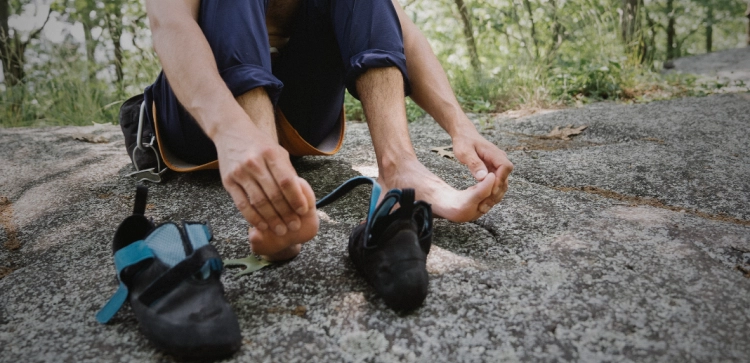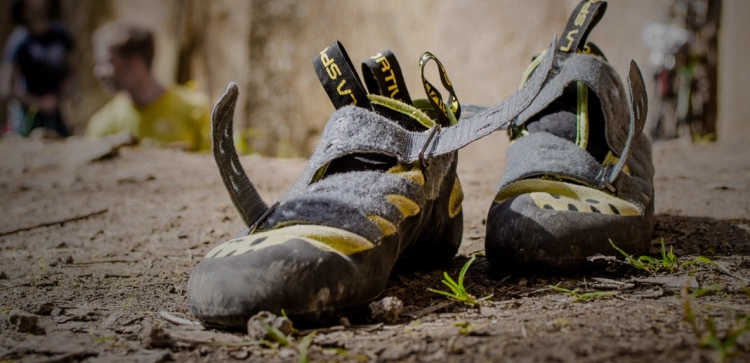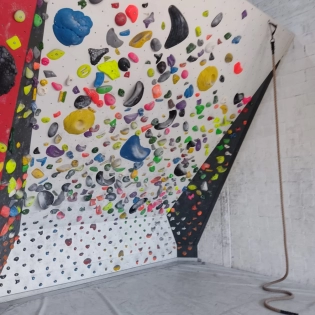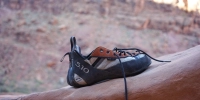How Tight Should Your Climbing Shoes Really Be? The Key To Comfort And Performance

Are you struggling to understand if your climbing shoes are too tight, or if they just need more time to break in? In this article we will explore the topic of how tight climbing shoes should be, if they should be painful, and more common questions and misunderstandings surrounding this topic.
Climbing shoes should be tight enough to provide better sensitivity and control on the wall. A tight fit reduces the risk of injury and improves performance. However, it’s important to understand that if climbing shoes are too tight, this can cause pain, discomfort, increase the risk of injury, and reduce performance. If your shoes are causing significant pain or discomfort, it may be a sign that they are too small or not the right shape for your foot.
- Why Are Climbing Shoes So Tight?
- Should Climbing Shoes Be Tight Or Snug? What Is The Difference?
- How Tight Should Climbing Shoes Be?
- Are Climbing Shoes Supposed To Hurt?
- Should Bouldering Shoes Be Tighter Than Sport Climbing Shoes?
- Is It Better To Wear Tight Shoes Or Loose Shoes?
- How Do You Make Your Climbing Shoes Less Tight?
- Final Thoughts
- Community Questions · 0
Why Are Climbing Shoes So Tight?
Climbing shoes are designed to fit snugly around your foot, with your toes slightly curled in them, in order to provide the best possible performance on the wall while climbing.
When climbing, it’s essential to have a good feel for the holds you are standing on or placing your feet on. Having a tight fit allows you to have better sensitivity and control on the wall, allowing you to place your feet more precisely. This is particularly important and noticeable on more technical and challenging climbs.
A tighter fit also helps prevent your foot from slipping and sliding around inside the shoes, which can increase the risk of injury, and reduce performance.
However, it’s important to understand that if your climbing shoes are too tight, you will risk loosing all of the above benefits, and could actually cause the opposite. You will be in greater risk of injury, and your performance can be reduced.
Should Climbing Shoes Be Tight Or Snug? What Is The Difference?
The terms "tight" and "snug" are often used interchangeably when it comes to climbing shoes, but there is a subtle difference between the two.
A snug fit is what you're looking for in a climbing shoe - this means that the shoe fits the shape of your foot and wraps around it without being overly tight. You want the shoe to be snug enough to provide good sensitivity and control on the wall, allowing you to feel the holds and to place your feet precisely.
On the other hand, if the shoe is too tight, it can cause pain and discomfort, which can actually hinder your performance on the wall. Shoes that are too tight can also cause circulation problems and other foot injuries, so it's important to find a balance between snugness and comfort when choosing climbing shoes.
How Tight Should Climbing Shoes Be?
The general recommendation is to find a fit that is snug but not overly tight. The goal is to achieve a balance between comfort and performance, with a snug fit that allows for good sensitivity and control on the wall without causing pain or discomfort.
One way to determine the right level of snugness is to pay attention to how your toes feel in the shoe. Your toes should be slightly curled, but not cramped or bent uncomfortably. The shoe should fit snugly around the entire foot, with minimal wiggle room in the heel or toe box.
It's also worth noting that different types of climbing shoes may have slightly different fits, depending on their intended use. For example, a more aggressive shoe designed for steep or overhanging climbs may have a tighter fit than a shoe intended for all-around use.
A determining factor in how tight the shoes should be will depend on your individual preferences and the type of climbing you plan to do.
How Tight Should New Climbing Shoes Be?
There is a slight difference between the tightness of new climbing shoes vs. broken in climbing shoes.
New climbing shoes tend to stretch during their break in period, which means that the way your shoes will feel a few months after you buy them may be different from the way they felt when you first bought them.
The time and amount the shoes will stretch depends on different factors, such as the shoes material, if they are leather or synthetic, and how often you climb in them.
Here is a comprehensive guide on how to choose climbing shoes that goes over what to consider when buying climbing shoes. It includes how to know which ones are right for you, while taking into consideration the break in period of the different types of shoes.
How Tight Should Climbing Shoes Be After They Break In?
After your climbing shoes have broken in, they should still fit snugly, but they may also feel slightly more comfortable than they did when you first bought them. As climbing shoes tend to stretch over time, they may loosen up a bit after a few sessions, which can affect the fit.
If your shoes start to feel too loose or sloppy after breaking in, you may need to choose a smaller size next time you buys those shoes. If you buy different shoes, you should take into consideration how loose these shoes have become, and to make sure the new shoes will either not stretch that much, or that you have downsized enough.
Are Climbing Shoes Supposed To Hurt?
While climbing shoes are designed to fit snugly, they are not supposed to cause unbearable pain or discomfort, especially not throbbing pain that lasts even after you take the shoes off.
In fact, a shoe that is too tight can actually hinder your performance on the wall, as it can cause your feet to cramp or fatigue more quickly, and can increase your risk of injury.
If your climbing shoes are causing you significant pain or discomfort, it's important to re-evaluate the fit. You may need to go up a half size or try a different model that is better suited to the shape of your foot.
Comfort vs Pain For New Climbers
New climbers tend to go one of two ways: Either, they ignore the pain and take it as discomfort, or, they perceive the discomfort as pain. Many use the two terms interchangeably.
For people whole are not used to wearing tightly fitting shoes, discomfort may seem to cause more pain than it actually does. Likewise, pain is very often assumed to be discomfort.
It’s important to distinguish between the two, since if you are feeling unbearable pain, but you think it’s just discomfort and that you will get used to it, you are at great risk of injury. Not to mention that the shoes probably won't increase your performance with them being so tight, which makes them only a hazard and a risk.
Should Bouldering Shoes Be Tighter Than Sport Climbing Shoes?
To start, the terms bouldering shoes and sport climbing shoes, for most, are the same thing. You can boulder in sport climbing shoes, and you can sport climb in bouldering shoes. It depends on your personal preference. It’s more about the design of the shoes, and the level of aggressiveness of the shoes.
Bouldering shoes and sport climbing shoes may have slightly different fits depending on their intended use, but there is no hard and fast rule about which type of shoe should be tighter.
Bouldering shoes are generally designed for short, powerful climbs that require a high degree of sensitivity and precision. As a result, they may have a tighter, more aggressive fit than sport climbing shoes. This can help provide better control and grip on the wall, particularly on steep or overhanging routes.
Sport climbing shoes, on the other hand, are typically designed for longer, endurance-oriented climbs that require more comfort and support. As a result, they may have a slightly roomier fit to allow for better blood flow and reduced fatigue during extended climbing sessions.
Is It Better To Wear Tight Shoes Or Loose Shoes?
The answer is typically tighter. This is because a tight fit provides better sensitivity and control on the wall, which is crucial for precise footwork and maximizing grip. A tighter fit also helps to prevent your feet from sliding around inside the shoe, reducing the risk of injury and improving performance.
That being said, it's important to find a balance between a tight fit and comfort. Shoes that are too tight can cause pain, cramping, and even lead to injuries like blisters or calluses.
How Do You Make Your Climbing Shoes Less Tight?
New climbing shoes tend to go through a break in period, which results in slightly looser and more comfortable shoes.
The break in period varies quite a lot. Everything from the amount of time it takes for the shoes to break in, to how much the shoes will actually break in and stretch, depend on many different factors, such as: The shoes material, how often you climb in them, how much you downsized, and the break in methods you use to break them in.
You can read more on this in our guide to breaking in climbing shoes that goes over this topic thoroughly. It covers everything from what it actually means to break in climbing shoes, to which shoe types break in more, how long it takes, and tips to help speed up the process.
Final Thoughts
To summarize, climbing shoes should generally be tighter rather than looser to provide better sensitivity and control on the wall, and to help prevent injuries.
However, finding the right balance between a tight fit and comfort is crucial to prevent pain, cramping, and injury, as an overly tight shoe can do much more harm than good.
Remember that discomfort is normal, but pain is not, so if your shoes are causing significant pain or discomfort, it may be a sign that they are too small or not the right shape for your foot.

















